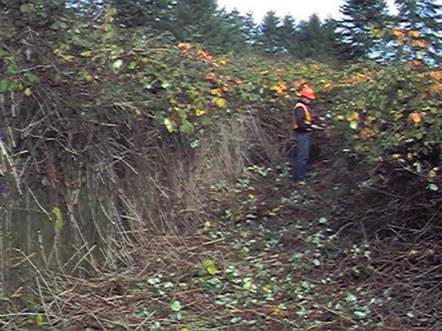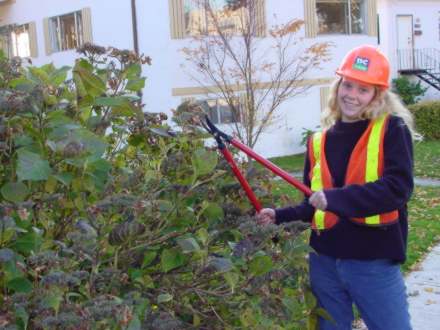Background
The Viaduct Flats are located south of the
lands of the Horticultural Centre of the Pacific in Saanich, B.C. They
have been drained and used for agricultural land for many years. The farming,
mostly potatoe, that took place on this piece of land was eventually abandoned.
Shortly after the flats were left to fill naturally, sightings of a beaver
were reported which built a dam to further fill the flats.
Beaver dams create habitat that is ideal for nesting
waterfowl and songbirds and it was not too long before this area began
to be regularly used by Canadian geese, Mallards and many others. A survey
was done in 1993 by the Victoria Natural History Society, which catalogued
the variety of species now using the area (Figure 1). The Viaduct
Flats are now one of the most prolific wetland areas for migratory waterfowel
on the entire Island. The land has a covenant placed on it and the
Horticultural Center of the Pacific has become the official steward.
The area surrounding the flats was logged prior
to the creation of the Horticultural Centre. Most recently, the Horticultural
Centre applied for and received funding from Forest Renewal British Columbia
to restore these forests. The Coastal Douglas Fir forest type is considered
threatened and therefore it is important to maintain the remaining parcels.
Maintaining these parcels involves first undergoing invasive species removal
and then reintroducing native plants found in a Coastal Douglas Fir forest.
Figure 1. Viaduct Flats Pond and resident
waterfowl
Veins of Life Watershed Society Involvement
Along the edges of the forest and altered creek
path invasive species such as Himalayan Blackberry (Rubus discolor),
Scottish Broom (Cytisus scoparius) and Reed Canary Grass (Phalaris
arundinacea) have grown into a dense thicket of vegetation. However,
Himalayan Blackberry makes up the bulk of the thicket (Figure 2.)

Figure 2. Beginning of Himalayan blackberry
thicket bashing
Veins of Life has been involved in
many projects of invasive species removal and native species
reintroduction (see Gorse
Removal in Gorge Park). With this experience Veins of
Life was ready and willing to take on this immense task of
removing all the Blackberry to expose the topography and plant
native species.
The society will also be responsible
for the contruction of trails that will surround the pond and cut through
the forest, a platform and boardwalk for viewing, and signage to educate
the public on the project as well as the natural history of the area.
Phases of Viaduct Flats Project
Phase One : Invasive Species Removal
The singular most important tool
in combating a thicket of blackberry is a pair of loppers (Figure 3.).
Loppers are used to cut the blackberry in large sections and then once
brought to ground level cut into smaller pieces which can be easily be
walked over (Figure 4). Occasionally, a brush cutter is used to take out
some of the smaller sections of blackberry and canary grass. All cuttings
remain on the ground to maintain the biomass of the area. Removing too
much biomass makes it difficult for the native vegetation to establish.
Figure 3. Best weapon against blackberry
invasion
 |
Figure 4. Blackberry
cut into small pieces making it easier for replanting
Phase Two: Native Species Reintroduction
After a corridor is cut through the blackberries along
the fence and the base of the slope of the property then a
planting grid of 4 m will be established. 28 species, including
11 tree sprecies, totalling 3,350 plants will be planted on
the 4 m centres and interplanted with Sitka alder (See complete
species list). When canopy closure has been achieved
the Sitka alder will be removed. Suppression of the blackberry
will continue until canopy closure has been achieved. Roundup
cannot be used in the covenant area or within 10 m of the
creek.
 |
Figure 5. Planting of native
species at Viaduct Flats
Progress
Both Fall 2000 Veins of Life Crews
participated in the invasive species removal and revegetation with native
ones. The contract for these two steps goes until MR.h 2001. All the invasive
species removal and native species reintroduction may not be completed
by the time the next crews begin in January 2001. From there the next crews
will carry on and may be involved in the further steps of the project.
Information on those future steps will be updated as the project proceeds.







